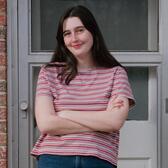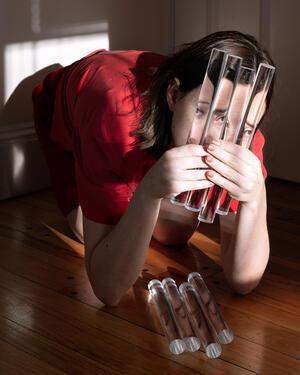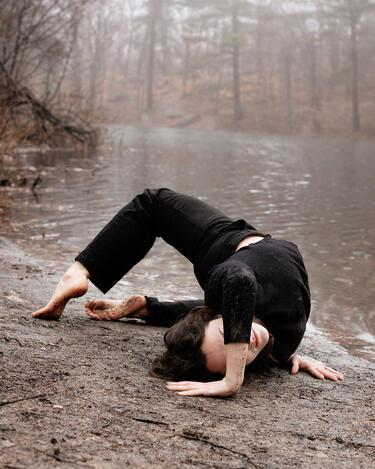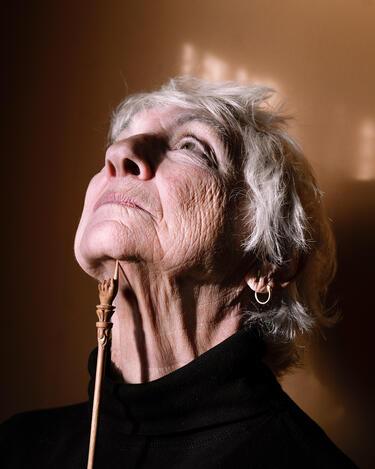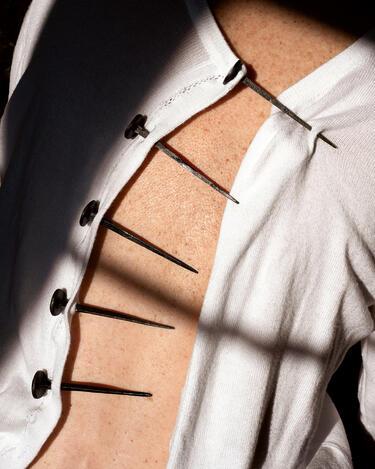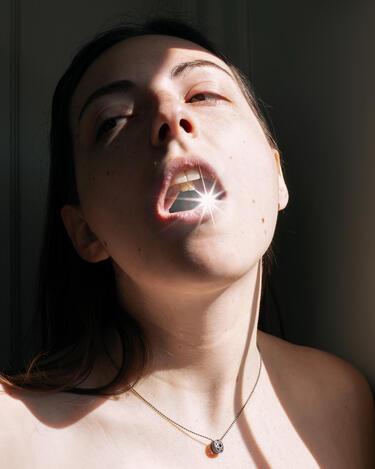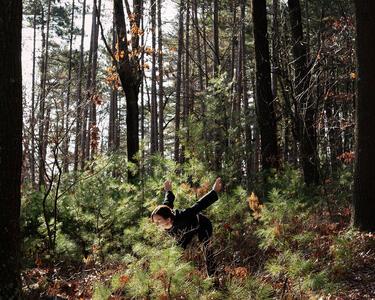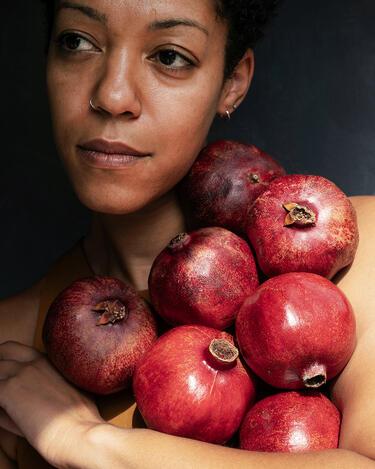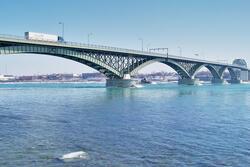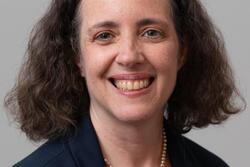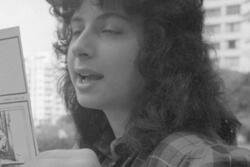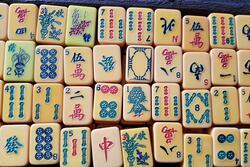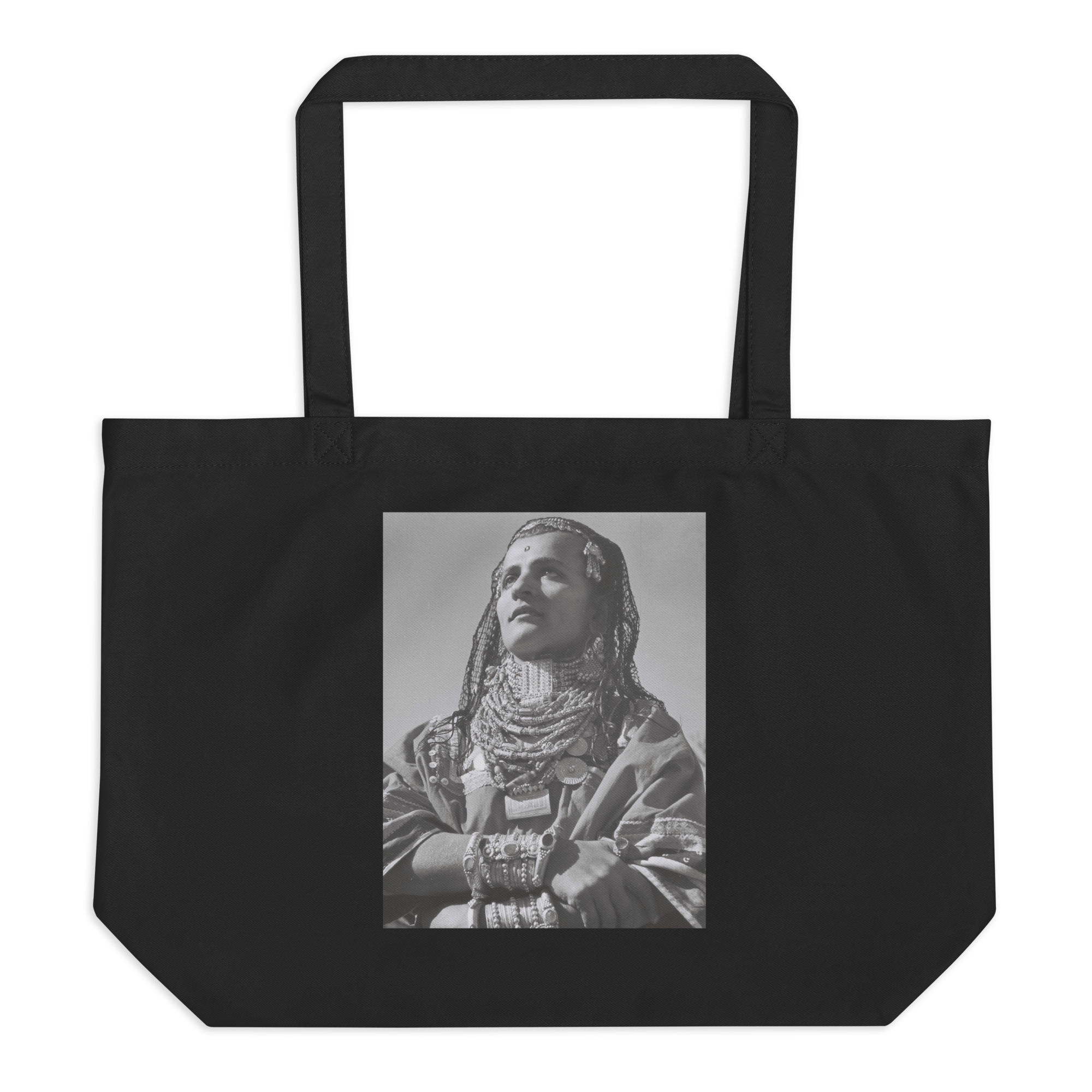Q & A with Photographer Hannah Altman
JWA: Tell us about your new book, We Will Return to You, and the exhibition accompanying it, As It Were, Suspended in Midair.
Hannah Altman: We Will Return to You (Saint Lucy Books, 2025) is a collection of photographs that draws on Jewish folkloric practices, exploring how Jewish storytelling is translated and expanded through images. I consider As It Were, Suspended in Midair, on view at Brandeis Kniznick Gallery in Waltham, MA, to be an excerpt from the book that explores these ideas.
Both within the pages of the book and on the walls of the gallery, I’m interested in the throughlines that appear across Jewish narratives, particularly the recurrent themes of looming tension, shifting environments, carving memory, and sacred surrealism—all elements that are punctuated by Jewish ritual and iconography.
JWA: What drew you to photography as an artistic medium? How does it allow you to express yourself?
HA: I make images in a way that explores the moldability of a photograph and considers them as a site to build layers. The photographs in the project are rooted in a particular history, but expand outwards towards new possibilities.
Image-making is, in this sense, both preservation and transformation in a way that really interests me. Photographs can be this vessel for memory, but the vessel itself is constantly rearranging its shape as a way to both engage with history and build something new from it.
The work is rooted in Jewish folklore and storytelling, and photography really allows me to translate these ephemeral yet ingrained narratives into something visual. The act of building an environment to photograph mirrors the ways stories are retold and reinterpreted across time and place. Through photography, I can explore an evolving approach to Jewish narrative and visual language, creating an environment that is both rooted and unfurling.
JWA: Tell us more about what elements of Jewish and folkloric storytelling you drew from and how they relate to Jewish culture and storytelling throughout history.
HA: Jewish storytelling is evolving and layered. In my photographs, I draw from a range of sources that reflect this expansiveness: most often I am drawn to Yiddish folklore, contemporary Jewish literature, Judaica objects, and bodily performance.
Narrative text plays a central role in my approach to image-making. The stories I pull from often exist in a sort of doubled space by blurring environment and myth, the mundane and the sacred. I’m particularly interested in how they use allegory, exaggeration, and repetition to pass down knowledge, shape memory, and explore tension.
The inclusion of Judaica objects serves as a sort of “anchor” throughout the work. I see them as punctuation marks within a story that ground the narrative in Jewish practice, yet are still active in the image. When placed within the frame, they don’t just reference tradition; they become part of an ongoing dialogue about inheritance, ritual, and reinvention.
At its core, this work asks how these inherited narratives continue to shape us as they shift and molt and are translated through images and embodied in new ways. It’s less about preserving a fixed story and more about engaging in a kind of playful (albeit often dark) mode of storytelling that to me feels central to Jewish folklore and thought.
JWA: The exhibition credits you for your “distinct use of natural light.” How do you use light as a paintbrush or storytelling tool in your photographs?
HA: Less of a paintbrush, more of a knife. I use sharp, directed sunlight to carve out the environment of the images, shaping the figures and the space they inhabit. The light is integral to the work; I use it to deepen a sense of mystery and tension in the frame. I'm drawn to the way the sun moves thickly throughout a room, illuminating a subject quickly and decidedly before it recedes into the dark edges of the frame.
I see these bright points of sunlight as an active character in the work. To me, she has her own voice and body language, emphasizing gestures and punctuating moments of stillness. It echoes the way Jewish storytelling unfolds; layered, symbolic, often carrying an undercurrent of the unseen…
The light is crucial. I hoard various reflective objects in my studio for this purpose.
JWA: Do you have a favorite or particularly meaningful photograph in the collection?
HA: I’ve been thinking a lot about the book’s cover image, Telling You. It’s a self-portrait in which I hold a small piece of broken mirror inside my open mouth. A sharp glint of sunlight catches the mirror’s surface, reflecting outward, almost as if the light is emanating from within me. The mirror is balanced just behind my lips, partially obscured but undeniably present, and in its reflection, the underside of my top row of teeth becomes visible, distorting the familiar architecture of the mouth. The photograph considers perception, distortion, and oral storytelling.
Light feels like an active character here, illuminating and reshaping the body and the environment. It makes me think about storytelling, how narratives shift and change, and how stories are never fixed. They refract and take on new shapes depending on how we embody them. The mirror in the mouth becomes a material representation of this fluidity and suggests that Jewish storytelling is both an offering and a distortion, something that passes through us, reshaped by time, memory, and interpretation.
JWA: What does it mean to you to have this work exhibited to the public? Do you have an ideal audience for this exhibition?
HA: It goes without saying that this is a difficult time to be presenting a very identifiably Jewish body of work. The visibility feels vulnerable. There’s a weight to showing work that engages directly with this subject matter at a moment when expressions of Jewishness feel fraught and often flattened.
But it never occurred to me to stop making work. I guess it’s because I see visibility as necessary, as a way of insisting on complexity, depth, and presence when so much of the conversation around identity becomes reductive and essentialist. Really, I think the purpose of the work is to carve out space for expansiveness, open-endedness, connection, and mystery.
It is evident to me that these modes of storytelling are not new; they’re deeply embedded in Jewish tradition and in the ways stories have been retold for generations. To view the work solely through the lens of the present moment, to frame it only as a response to urgency, would flatten it. I’d prefer it to function instead as an ongoing conversation, one that moves across time and lands, and resists rigidity.
Having the work in the world allows for expansive dialogue. I like to think that Jewish viewers see elements of their own knowledge explored and expanded, and that others engage with the work in a way that fosters curiosity and interpretation. The “audience” is anyone willing to step into the forest of layered storytelling and listen to the reverberation in those trees.
JWA: What sustains your creativity?
HA: Text and light, mostly. Sorry to keep going on about the sun, but that’s really the core of my practice. I was talking to a friend the other day about remaining mindful in between projects of what sparks ideas. Mine is paying attention to the light. Watching it move through a room, pour onto a stranger’s back on the sidewalk, reflect off of a mirror. Delicious. I’ve found that the more I tune into the world during the research phase of a project, the sharper my ideas become. Leaning in to one (thinking or looking) without the other doesn’t work quite as well for me.
JWA: Are there any Jewish feminist artists who inspired you as you created this exhibition?
There isn’t one singular photographer I looked to while creating this work, though I think of myself in conversation with a lineage of Jewish feminist artists and writers who explore history, ritual, and storytelling in expansive ways. It feels especially fitting to have this interview published on JWA, because so much of my source material came from discovering writers like Fradl Shtok and artists like Claude Cahun. This kind of work shapes the way I approach narrative and imagery.
As It Were, Suspended In Midair is on view at Brandeis Kniznick Gallery in Waltham, MA until June 12.
